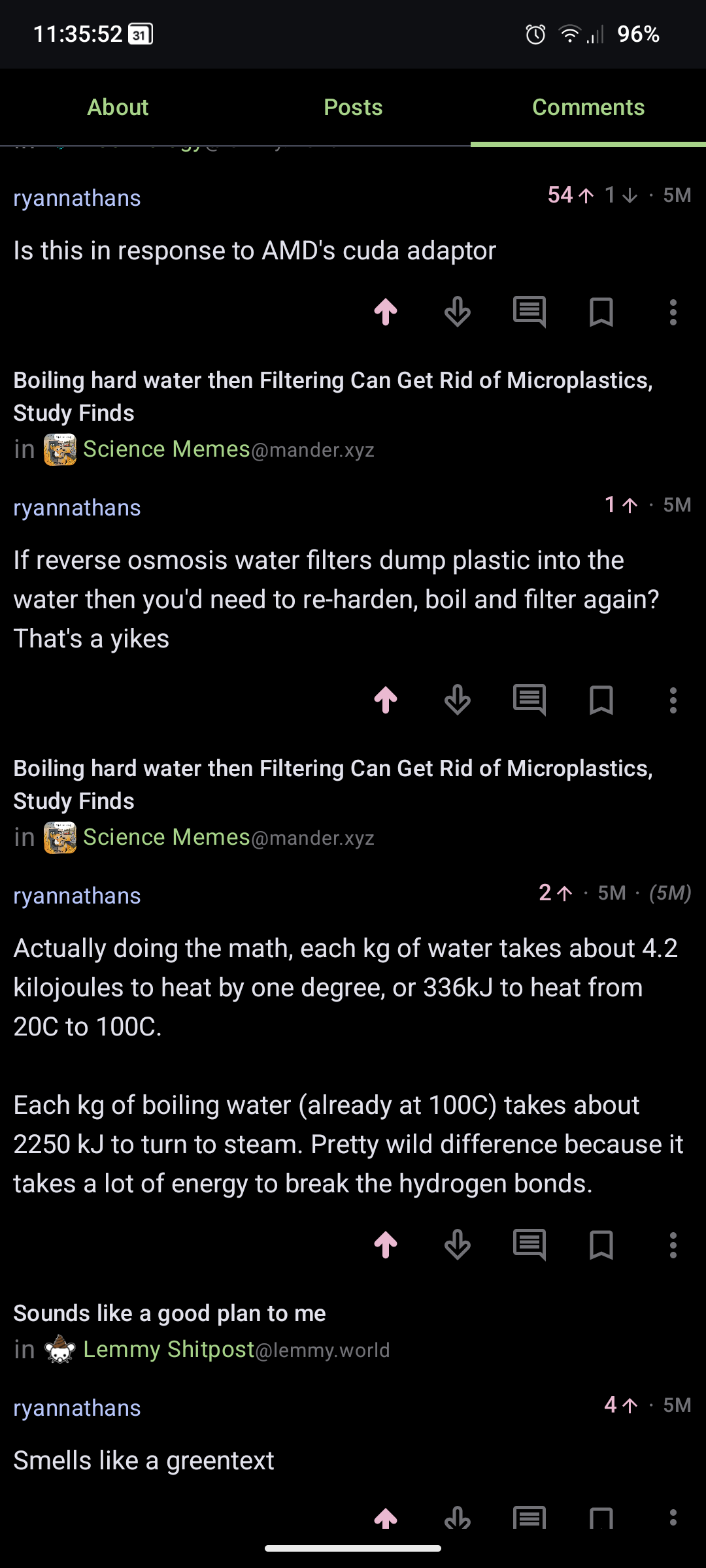Using 3D printing, researchers developed lattices which removed up to 75 per cent of PFOA, one of the most common forever chemicals.
Archived version: https://archive.ph/jCkHu
“naturally we won’t release the stl files or any models of any type. we wouldn’t want normal people making these”
Pretty sure normal folks don’t have indium oxide at home, nor a 3D printer that can handle the material correctly.
'Scuse me neighbor, can I borrow a spool of indium oxide filament?
"In three hours, the monoliths removed 53 per cent of perfluorooctanoic acid (PFOA), one of the most common forever chemicals also called PFAS.
Moreover, by heating the monoliths at 500°C and reusing them three times, researchers observed that at least 75 per cent of PFOA was removed."
So yeah, like 9+ hour process. Gotta cool them down between each run. I looked on wikipedia, Indium is about $167/ Kg. What if, I know this is crazy, what if we stopped poisoning the planet, and ourselves?
What if, I know this is crazy, what if we stopped poisoning the planet, and ourselves?
I’m intrigued! How would we make a profit doing this?
The plan is that we get companies to pay us to use our brand marking on their packaging, and then for every ten million dollars we receive we don’t dump an arbitrarily large tank of horrible chemicals into the groundwater of an underprivileged community. In this way, as our profits increase, less and less poison will be irrevocably added to vital planetary resources! Incidentally our headquarters is in a volcano and the “Zero Poison” profit level for the first year is ten billion dollars.
Even if we could stop poisoning the planet tomorrow, we still need to figure out how to deal with the mess we’ve created so far. The important distinction is to not let this technology development be used as a smokescreen for industries that produce PFAS, as has been done with carbon capture for the fossil fuel industry.
Perhaps the average Jane won’t be making one of these filters at home, but they could perhaps be utilized in water treatment facilities to help stem forever chemical contamination in municipal water supplies. Better yet, make DuPont pay for these systems via an industry tax or punitive damages for their negligence when promoting the materials and downplaying their risks to human health. (and the environment)
Totes agree!
Unless you have indium oxide filament, it wont do any good. This is more of a scientific proof of concept, rather than an engineered drop-in solution.
It is possible they don’t trust this to be food grade yet, or maybe it traps a lot of forever chemicals but it erodes microplastics as it filters. It also sounds like you need a fairly special material to print it, not just your average plastics.
Something people can do to treat their water for some forever chemicals is using activated carbon filters. There are several types available from different residential water treatment companies.
I’ve been using a multi-stage RO filter for years. It used to be because one didn’t know what was coming out of the pipe in the next gallon of water. Now it’s because I know what’s coming out of the pipe.
Recent research has shown RO membranes produce a fuckton of microplastics
Can you cite a source on this, please?
I went back through 6 months of my comment history to find out the post has been removed… By memory a study found a ton of microplastics in bottled water, most were polyamide nanoplastics which was not found in the plastic of the bottle itself. It seemed the only part of the process that was made of polyamide was the RO membrane


Yeah need a source for that, tried looking for it and found nothing
See my other comment
Forbidden instant ramen




